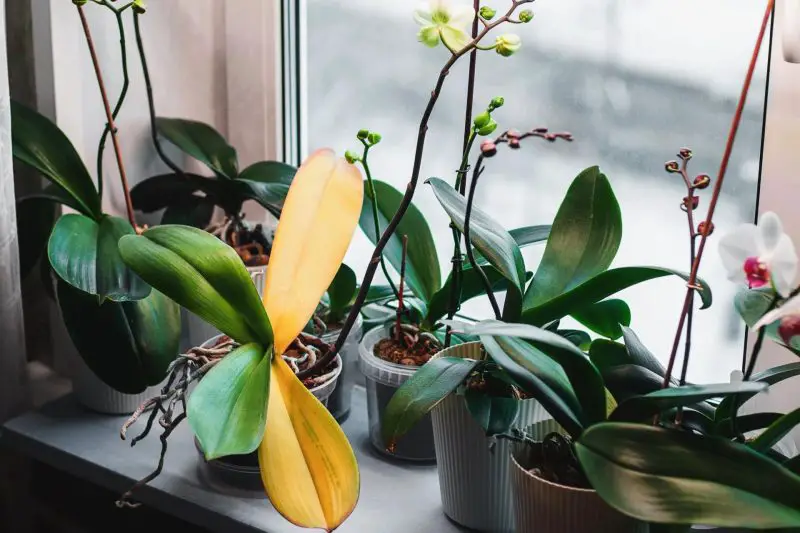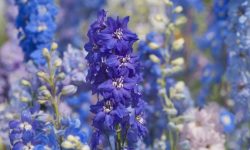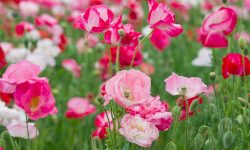Orchids are among the most elegant and popular flowering plants worldwide, cherished for their delicate blooms and long-lasting flowers. However, one of the most common concerns among orchid enthusiasts is the appearance of yellow leaves. Yellowing leaves on orchids can be alarming, signaling potential issues that, if left unchecked, might affect the plant’s overall health and flowering ability. Understanding the reasons behind this discoloration and learning how to address them promptly is essential for every orchid owner.
Yellow orchid leaves can result from a range of factors, from natural aging processes to environmental stresses and improper care. These causes may include watering errors, inadequate lighting, nutrient deficiencies, pests, diseases, or temperature extremes. Differentiating between normal leaf yellowing and symptoms of stress is vital for providing the right treatment. This article explores the most common causes of yellow orchid leaves and offers practical solutions to revive and maintain your orchid’s health.
Understanding Orchid Leaf Yellowing

Natural Aging Process of Orchid Leaves
It is important to recognize that some yellowing in orchid leaves is perfectly normal. As orchids grow, older leaves at the base of the plant naturally age, turn yellow, and eventually fall off to make room for new growth. This process typically occurs once the leaf has completed its lifecycle and does not indicate a problem.
Such yellowing is usually limited to the oldest leaves and happens gradually without other signs of distress. Gardeners should allow these leaves to naturally detach rather than forcibly removing them, which could damage the plant.
Distinguishing Between Normal and Problematic Yellowing
Unlike natural aging, problematic yellowing often affects multiple leaves, including new or mid-level leaves. It may be accompanied by additional symptoms such as leaf spots, wilting, softness, or a general decline in plant vigor. These signs suggest the plant is under stress and requires intervention.
A close examination of the orchid’s environment and care routine can help identify the specific cause of yellow leaves, allowing for targeted corrective measures.
Common Causes of Orchid Leaves Turning Yellow
Improper Watering: Overwatering and Underwatering
Watering mistakes rank among the top causes of yellow orchid leaves. Orchids have unique water needs that differ from many other houseplants. Overwatering is especially detrimental, as it leads to root rot, depriving the plant of oxygen and causing leaf yellowing.
When orchid roots sit in soggy medium for prolonged periods, they begin to decay, preventing the plant from absorbing sufficient nutrients and water. This results in yellow, limp leaves and eventually leaf drop. The plant may also emit a foul odor due to root decay.
Conversely, underwatering can cause dehydration stress. When orchids do not receive enough moisture, leaves may yellow, wrinkle, or develop brown tips as the plant conserves water. Dry, brittle leaves are a clear indication of insufficient watering.
Achieving the right watering balance is crucial. Orchids generally require watering once a week, but this can vary depending on climate, potting medium, and container type. Checking the medium moisture before watering helps prevent both over- and underwatering.
Inadequate Lighting Conditions
Light intensity and duration significantly influence orchid health. Insufficient light reduces photosynthesis, leading to pale, yellow leaves as the plant struggles to generate energy. Orchids grown in deep shade may exhibit yellowing leaves along with slow growth and lack of blooms.
On the other hand, excessive direct sunlight can cause leaf scorch, characterized by yellow or brown patches, especially on the leaf edges. Intense light can damage leaf tissues, leading to premature yellowing.
Providing bright, indirect light is optimal for most orchid varieties. East- or west-facing windows often offer suitable conditions, whereas south-facing windows may require filtering with sheer curtains to avoid harsh rays.
Nutrient Deficiencies and Fertilization Issues
Orchids require a balanced supply of essential nutrients for vibrant foliage and abundant flowering. A lack of nitrogen, potassium, or magnesium may cause yellowing leaves. Nitrogen deficiency often causes older leaves to yellow first, while magnesium deficiency results in interveinal chlorosis, where the areas between leaf veins turn yellow.
Over-fertilization or salt buildup in the potting medium can also cause leaf yellowing. Excess salts damage roots and impair nutrient uptake, manifesting as yellow or scorched leaves.
Regular feeding with a balanced orchid fertilizer, applied at half strength during the growing season, supports healthy leaf development. Flushing the potting medium occasionally helps remove excess salts.
Pest Infestations Affecting Leaf Color
Pests such as spider mites, aphids, scale insects, and mealybugs commonly infest orchids, feeding on sap and causing stress. Their feeding activity damages leaf tissues, leading to yellow spots, stippling, and eventual yellowing of entire leaves.
Severe infestations weaken the plant, reduce its vigor, and can cause leaf drop. Detecting pests early is critical to prevent widespread damage.
Treatments may include insecticidal soaps, neem oil, or horticultural oils applied carefully to avoid harming delicate orchid tissues. Regularly inspecting leaves, especially the undersides, helps catch pests before they multiply.
Fungal and Bacterial Diseases
Leaf yellowing can also indicate fungal or bacterial infections. Fungal diseases like leaf spot and root rot lead to yellow patches on leaves, often accompanied by black or brown lesions. Bacterial infections cause soft, yellowing areas that may emit a foul smell.
High humidity, poor air circulation, and excessive moisture favor the development of these diseases. Removing affected leaves, improving ventilation, and avoiding overhead watering reduce infection risks.
In severe cases, fungicides or bactericides may be necessary, but prevention through good cultural practices remains the best approach.
Temperature Extremes and Environmental Stress
Orchids are sensitive to temperature fluctuations. Exposure to cold drafts or temperatures below their tolerance range can cause leaf yellowing. Similarly, prolonged exposure to high temperatures or dry air can stress the plant.
Temperature stress affects water uptake and nutrient transport, resulting in chlorosis and weakened growth. Maintaining stable temperatures suited to the specific orchid species and avoiding sudden changes protects the plant.
Solutions to Prevent and Treat Yellow Orchid Leaves
Correct Watering Practices
Mastering orchid watering is essential to prevent yellow leaves. Water orchids thoroughly, allowing water to drain completely. Avoid leaving plants in standing water. Check the potting medium moisture before watering; if it feels damp, wait a few days.
Watering frequency varies seasonally; orchids need more water during active growth and less during rest periods. Using pots with drainage holes and well-draining media like bark or sphagnum moss supports healthy roots.
Optimizing Light Exposure
Assess the lighting conditions and adjust placement accordingly. If the orchid’s leaves are dark green and limp, it may indicate insufficient light. Moving the plant closer to a window with filtered sunlight can improve leaf color.
If leaves show yellow patches or burn marks, reduce light intensity by relocating the plant or using a sheer curtain. Monitoring the plant’s response over weeks guides optimal light adjustments.
Balanced Fertilization Routine
Apply a balanced, water-soluble orchid fertilizer at half the recommended strength every two weeks during the growing season. Reduce feeding during dormancy.
Occasionally flush the potting medium with plain water to prevent salt accumulation, which can harm roots. Monitor leaf color and adjust fertilization accordingly.
Pest Control Measures
Regularly inspect orchids for signs of pests. At the first sign of infestation, isolate affected plants to prevent spread.
Use gentle, plant-safe insecticides such as neem oil or insecticidal soap. Apply treatments in the early morning or late evening to avoid leaf burn. Repeat applications may be necessary to eradicate pests fully.
Maintaining good hygiene, such as cleaning leaves and removing dead material, also deters pest problems.
Managing Diseases Through Cultural Care
Ensure good air circulation around orchids to minimize fungal and bacterial growth. Avoid wetting leaves unnecessarily, especially late in the day.
Remove and dispose of infected leaves promptly to reduce disease spread. Use sterilized tools when pruning.
If chemical treatments are required, select appropriate fungicides or bactericides labeled safe for orchids, and follow instructions carefully.
Regulating Temperature and Humidity
Maintain orchid temperature within the ideal range for your species, usually between 60°F to 80°F (15°C to 27°C). Avoid exposing plants to drafts, heaters, or air conditioners.
Increase humidity by placing humidity trays near orchids or using a humidifier. Grouping plants can also raise local humidity levels.
Monitoring temperature and humidity helps reduce stress-induced yellowing.
When to Remove Yellow Leaves
While some yellow leaves are normal, removing those that are fully yellow or damaged benefits the orchid. Carefully prune leaves at their base using sterilized scissors or pruning shears to prevent infection.
Removing yellow leaves improves airflow, reduces pest hiding places, and enhances the plant’s appearance. Avoid cutting healthy green tissue to prevent stress.
FAQs About Orchid Leaves Turning Yellow
Why are my orchid leaves turning yellow?
Orchid leaves turn yellow due to various reasons such as overwatering, underwatering, improper light, nutrient deficiencies, pests, diseases, or temperature stress.
Can yellow orchid leaves recover?
If yellowing is caused by reversible factors like watering or light issues, new healthy leaves can grow after proper care. Severely damaged leaves usually do not recover and should be pruned.
How often should I water my orchid to avoid yellow leaves?
Generally, watering once a week is recommended, but always check the potting medium first. Water only when it feels dry to avoid overwatering and root rot.
Can pests cause yellowing of orchid leaves?
Yes, pests like spider mites, aphids, and scale insects feed on orchid leaves, causing damage and yellowing. Early detection and treatment are important.
What is the ideal light condition for orchids?
Orchids thrive in bright, indirect light. Too little light causes yellowing due to poor photosynthesis, while direct sunlight may burn leaves.
Conclusion
Yellow leaves on orchids can be caused by various factors, ranging from natural aging to environmental stress and improper care. Understanding these causes helps orchid growers identify the problem early and take effective action.
Proper watering, adequate light, balanced fertilization, pest control, disease management, and stable environmental conditions form the foundation of healthy orchid care. With attentive care and timely interventions, yellow leaves can be minimized, allowing orchids to thrive and bloom beautifully.
Regular monitoring and gentle care ensure your orchids remain vibrant and healthy, rewarding you with their exquisite flowers season after season.






